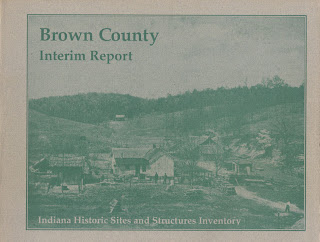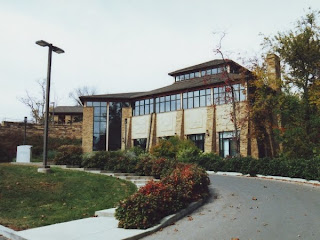
Once in a while in your genealogical research you may come across one of those families that seemed to have moved around a lot, at least it seemed so in the census years. You need to keep in mind though that the census was taken every ten years and a lot can happen in that ten year stretch in between times. Such was my problem trying to find the parents of this little girl, Lucretia J. Smith. I had recently took a day and photographed all the tombstones in one of our small older cemeteries in Brown County, namely the Southview Cemetery. (See the Southview Cemetery facebook page: https://www.facebook.com/pages/Southview-Cemetery-Nashville-Indiana-Help-us-Preserve-our-Heritage/220269917991135) Every once in a while when I go on one of my pet projects I come across one person that intrigues me, such was the case with Lucretia. I just had to find out who she was and who she belonged to.
Her stone was barely legible, but you could read her name and part of a death date - possibly 1860s. Also it seemed to read "Daughter of L. & H. V. Smith." She appeared to be buried in a family plot with a Lucas family. Two other Smiths were buried nearby, one a Thomas J. Smith and a Leander Smith. Thomas' stone read "Son of Margaret Smith, Died Feb. 22, 1866, Aged 5 years, 4 months, & 18 days. The other one was a Civil War stone for a Leander Smith with no dates on it. It read "Co. K, 145th Indiana Infantry." Now this could possibly be the beginnings of a family for Lucretia. Her stone had named an L. Smith as a father, but the mother was named H. V. Smith. So the search was on for other documentation.
First, a search for a marriage record for Leander Smith was necessary. One was found for him and a Margaret which resulted in bewilderment. Leander Smith married Margaret Lucas on May 3, 1867 - after her son (?) Thomas J. died in 1866. In the 1870 census Leander Smith is found living alone in the next household by Harrison Lucas who has a daughter named Margaret age 32. There is no sign of them living together or any young children as a result of their marriage in the Smith name, more questions arise. Then there's the question what happened to Lucretia's mother, this mysterious H. V. Smith? There was no sign of Margaret or an H. V. Smith buried in this cemetery. Why had Margaret named her dead child, Thomas J. Smith? Why can't I find Leander in earlier census records with another wife and a daughter named Lucretia?

On a whim I decided to look at Divorce Records for Brown County. There I found more pieces to the puzzle. "Leander Smith vs. Harriet V. Smith - filed Dec. 3, 1864. Married Dec. 5, 1857, Harden Co., Iowa. In July of 1862 they moved to Hamilton Co., Indiana where they lived until May of 1863 when Harriet 'eloped' with John J. Robison; they now live in Iowa. Depositions are to be taken from Edward Anderson, Stanton Teeters, and John Smith of Noblesville, Hamilton Co. . . Leander to have custody of their daughter, Lucretia J. Smith, age 5 in 1865 and Harriet to have custody of their daughter, Sarah E. Smith, age 3 in 1864."
That answered most of my questions, except one. Why did Margaret Lucas bury her son, Thomas J. under the name of Smith? Possibly, she couldn't afford a tombstone for him until much later. Maybe her new husband did this for her and she was grateful to him; she wanted to give her son his name. One can only wonder about her reasoning. It seems in the later census records Leander and Margaret lived together as man and wife, but had no other children. Leander died in 1895 and Margaret filed for his Civil War pension. So far no more has been found on Margaret or her final resting place.







































